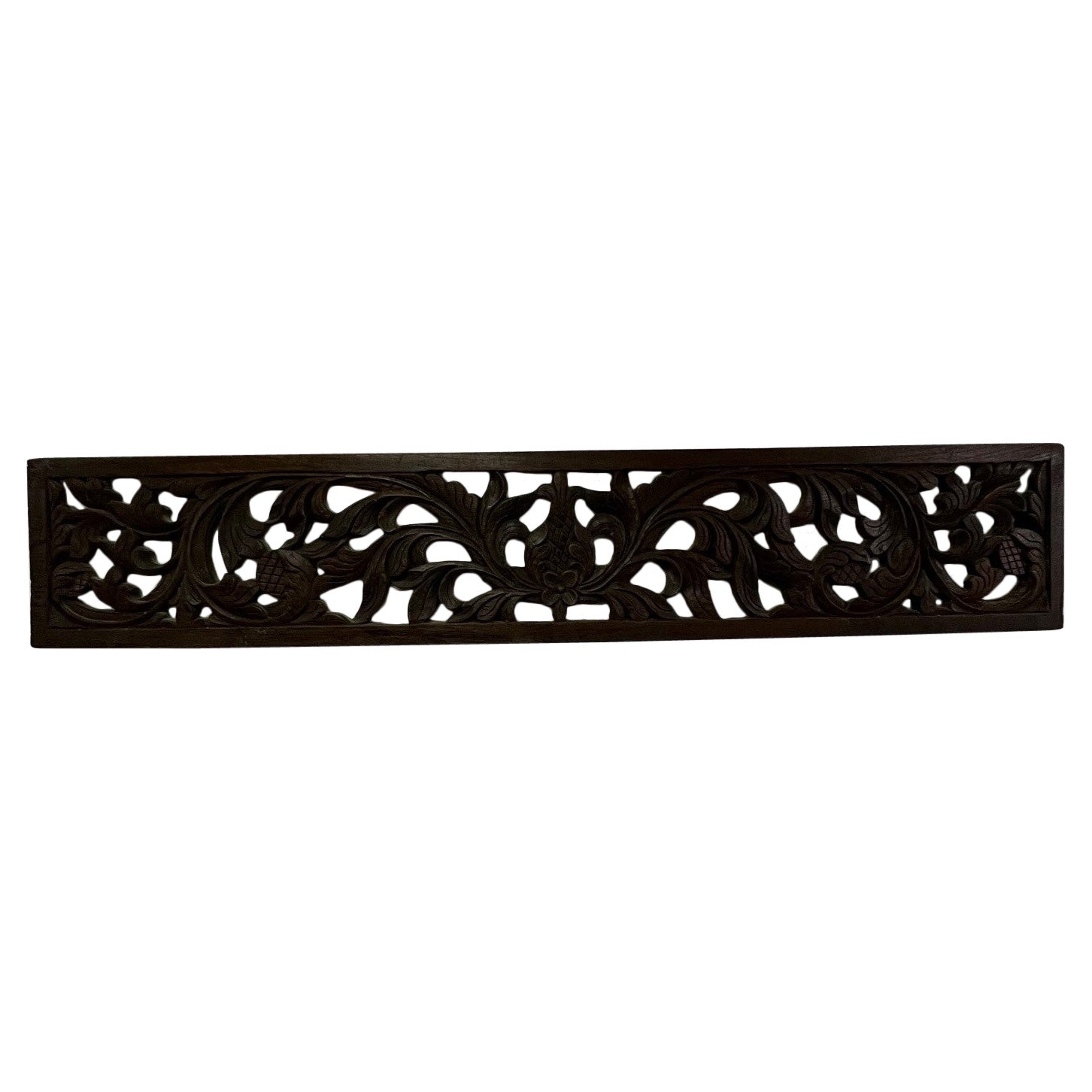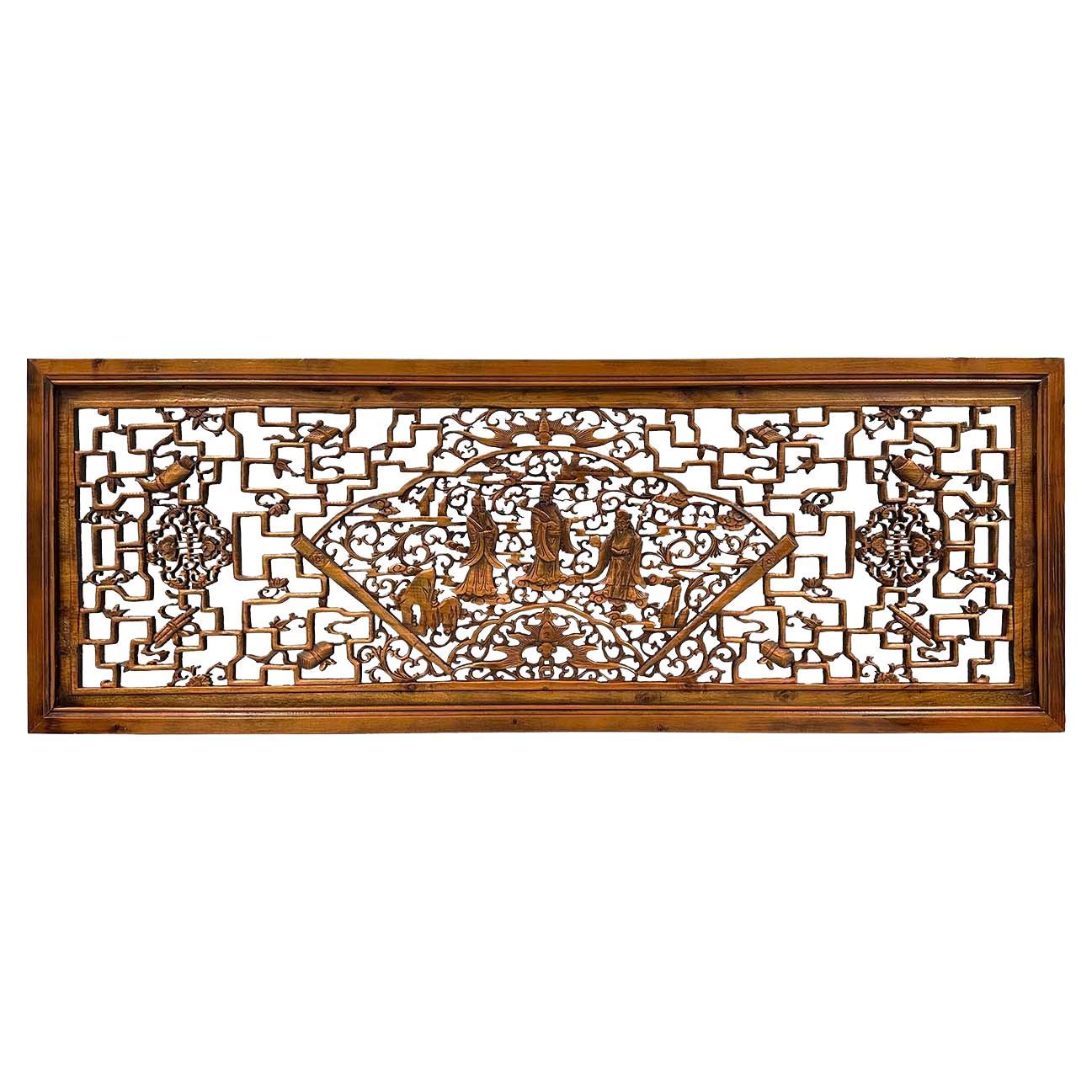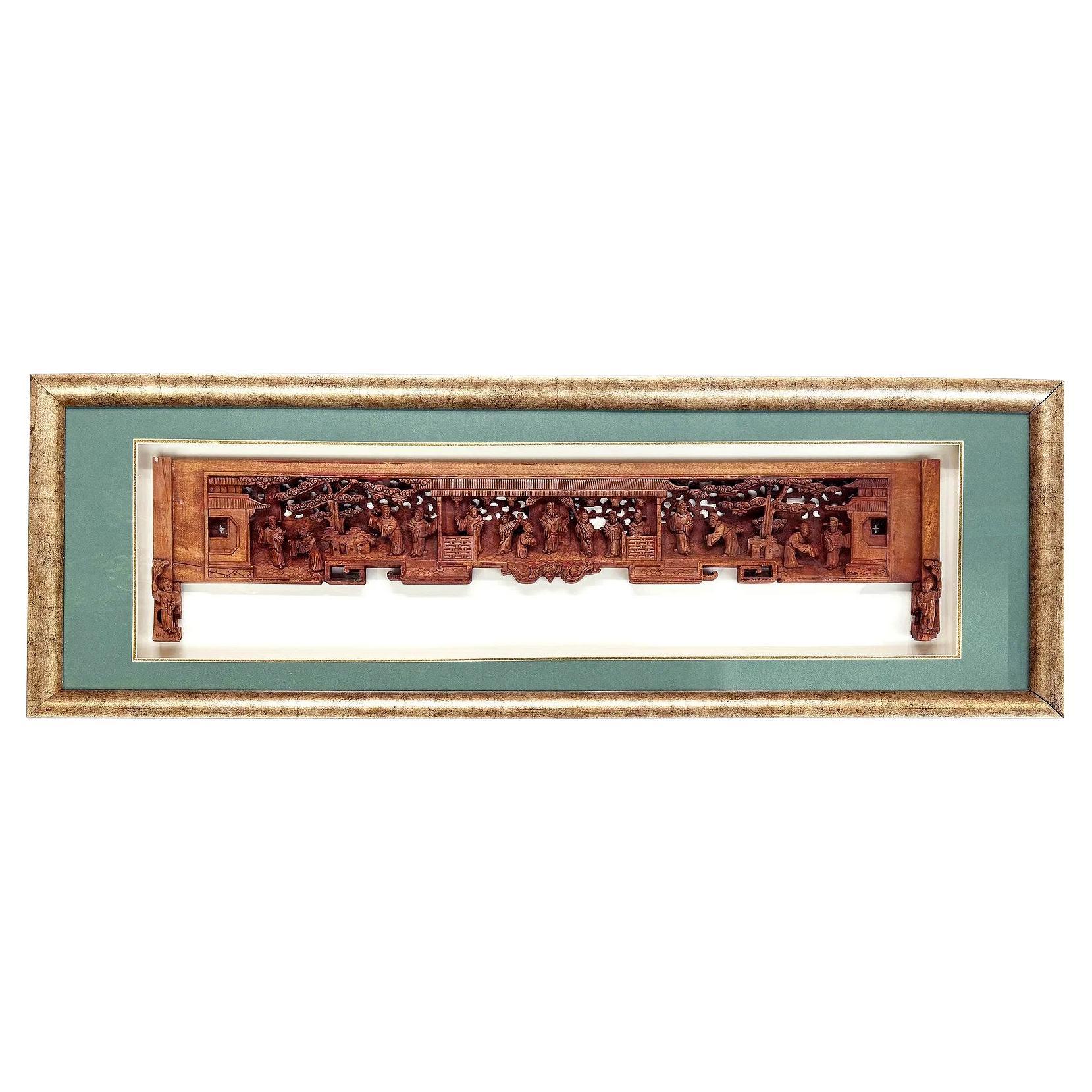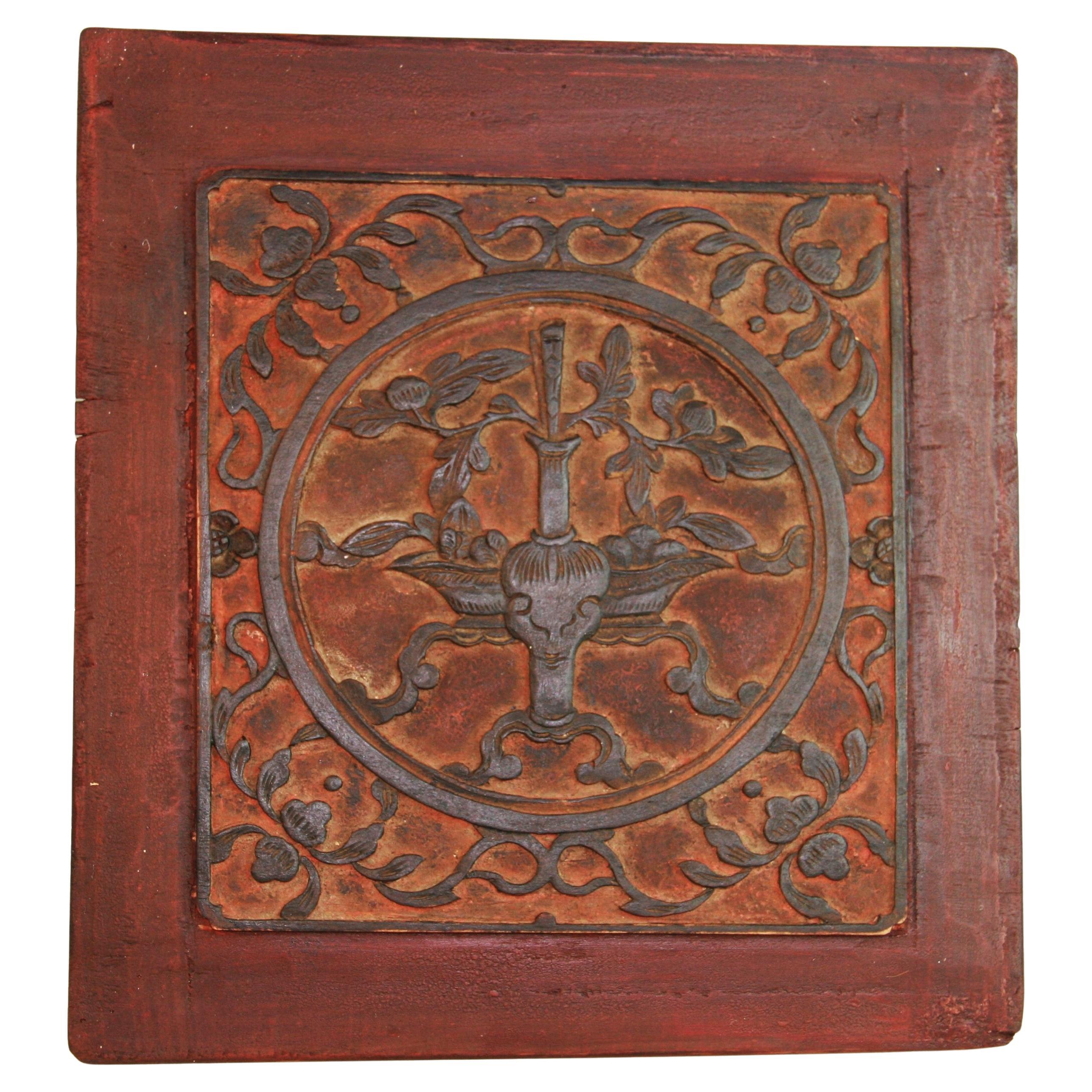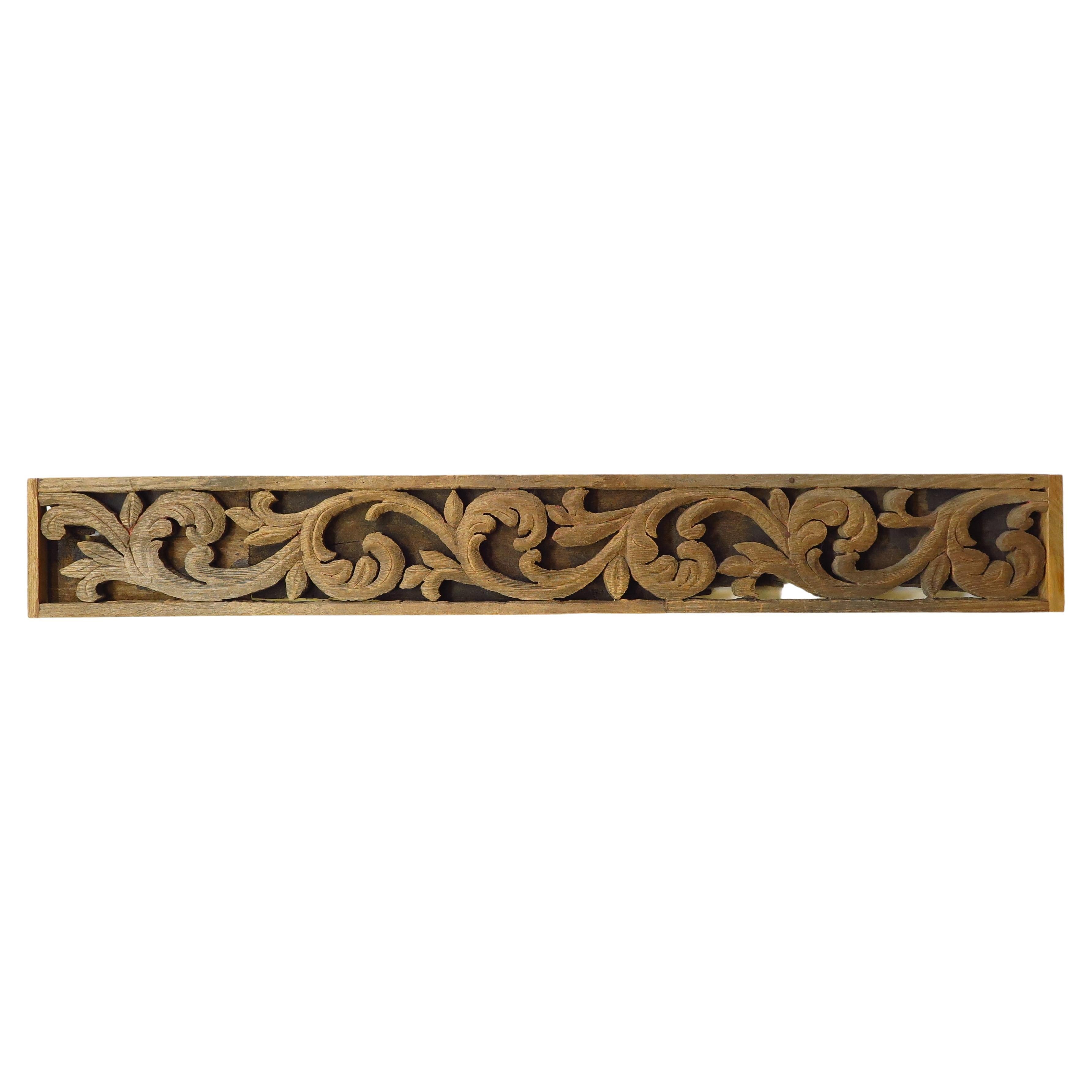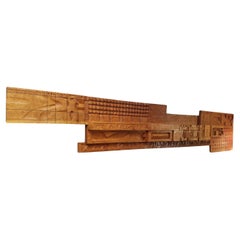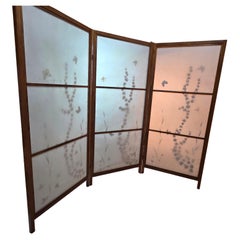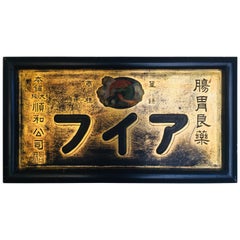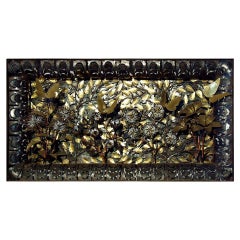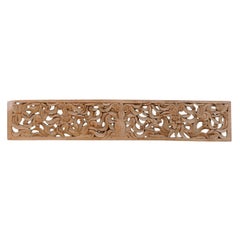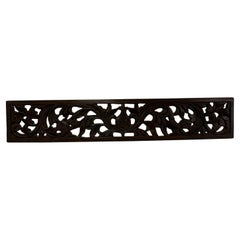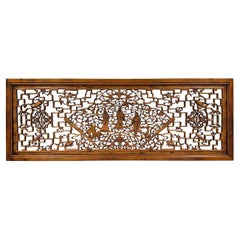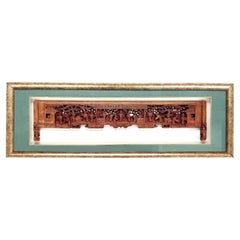Items Similar to Japanese Carved Wood Ramna, "architectural transom" circa 1910
Want more images or videos?
Request additional images or videos from the seller
1 of 7
Japanese Carved Wood Ramna, "architectural transom" circa 1910
$937.50
$1,25025% Off
£714.22
£952.2925% Off
€815.09
€1,086.7925% Off
CA$1,317.41
CA$1,756.5525% Off
A$1,435.74
A$1,914.3325% Off
CHF 760.29
CHF 1,013.7225% Off
MX$17,244.80
MX$22,993.0725% Off
NOK 9,625.42
NOK 12,833.9025% Off
SEK 8,849.63
SEK 11,799.5025% Off
DKK 6,087.84
DKK 8,117.1225% Off
About the Item
Japanese ramna crafted of carved sugi wood surrounded by a black lacquered frame. The ranma depicts a crane soaring above stylized pines and clouds.
The ramna would have originally been installed over interior partition doors in a traditional Japanese residence or building.
- Dimensions:Height: 16 in (40.64 cm)Width: 67.5 in (171.45 cm)Depth: 1 in (2.54 cm)
- Materials and Techniques:
- Place of Origin:
- Period:
- Date of Manufacture:1920s
- Condition:Wear consistent with age and use. Excellent vintage condition.
- Seller Location:Camden, ME
- Reference Number:Seller: App 3181stDibs: LU8984906805
About the Seller
5.0
Gold Seller
Premium sellers maintaining a 4.3+ rating and 24-hour response times
Established in 1984
1stDibs seller since 2010
241 sales on 1stDibs
Typical response time: <1 hour
- ShippingRetrieving quote...Shipping from: Laguna Beach, CA
- Return Policy
More From This Seller
View AllLeroy Setziol Early Masterwork-1963 16 Foot Sculpture Wood Relief Artwork
By Leroy Setziol
Located in Camden, ME
This monumental wood sculpture by Leroy Setziol (1915–2005) is a rare and significant early commission, created in 1963 for the National Bank of Portland, Oregon. Measuring an impressive 191" x 31" x 7", the piece marks a pivotal moment in Setziol’s career as he transitioned into large-scale architectural work—integrating fine art with the built environment in a way that would define his legacy.
Carved in his signature style of deeply incised geometric forms and rhythmic abstraction, the panel reflects Setziol’s exploration of nature, spirituality, and cultural symbolism. Commissioned during a period of progressive architectural development in the Pacific Northwest, the work exemplifies the region’s modernist ethos—where art and architecture were conceived in harmony.
Setziol would go on to complete numerous public commissions, collaborating with leading architects such as Pietro Belluschi and becoming one of the most influential wood sculptors of the 20th century. Early, large-scale works like this are exceptionally rare on the market and offer a unique opportunity to own a foundational piece of Pacific Northwest modernism.
This sculpture is not only a stunning example of Setziol’s craft—it is a historical artifact from a turning point in American architectural and design history.
The following is taken from the Portland Art Museum's profile of Leroy Setziol for their exhibit in 2015-16 celebrating the 100th year anniversary of his birth
"Leroy Setziol" Sept 5, 2015 – Oct 30, 2016
"A composer in wood, Leroy Setziol created lyrical sculpture that honors the beauty of a material strongly identified with the Northwest. The black walnut, teak, fir, and other woods he employed enhanced his complex gridded compositions, bringing them to life. A self-taught, intuitive worker, Setziol visualized his complex carvings using the grid as an armature to frame imaginative shapes. Throughout his career, his sculpture ranged from intimate works to large-scale public commissions. The largest work on display is an elegant, teak, two-panel wall relief from 1991. Twenty-three works are on view, including free-standing sculpture, totems, and a variety of wall reliefs.
Setziol’s sculpture gained greater recognition with Portland’s architectural community in 1964 when he was invited by Northwest Regionalist architect John Storrs to carve a series of large-scale relief panels for Salishan Lodge in Gleneden Beach...
Category
Mid-20th Century American Mid-Century Modern Wall-mounted Sculptures
Materials
Fir
Japanese Floor Screen Shoji Paper Natural Elements Elmwood Frame, 1950-1960
Located in Camden, ME
A Japanese three panel folding floor screen framed in Japanese Elmwood each panel encasing a large single Washi paper sheet with natural inclusions from Japan created in the 50's/60s...
Category
Mid-20th Century Japanese Mid-Century Modern Screens and Room Dividers
Materials
Elm, Paper
Kanban, Japanese Shop Sign, Meiji Period, 1868-1912
Located in Camden, ME
This 19th century Japanese Pharmacy sign advertises a popular stomach medicine, Aifu from the Juwa Co. in Osaka. The hand-painted registered trademark of the world looking through bi...
Category
Antique 19th Century Japanese Meiji Lacquer
Materials
Lacquer
$1,237 Sale Price
44% Off
Brutalist Torch Cut Wall Piece Style of Silas Seandel c.1980
By Silas Seandel
Located in Camden, ME
Complex overlays of brass, iron and copper make this Butterfly garden an interesting execution of metal surfaces. Presented in a heavy wooden frame with a secondary pierced iron arab...
Category
Late 20th Century American Mid-Century Modern Wall-mounted Sculptures
Materials
Brass, Copper, Steel
Hand-Carved Studio Mesquite Stele in the Style of J. B. Blunk, circa 1970
By J. B. Blunk
Located in Camden, ME
An interesting twisted column carved from a single piece of Mesquite in the reductive style of J. B. Blunk.
From an estate located in the California mid coast possibly from an artis...
Category
Vintage 1970s American American Craftsman Sculptures
Materials
Wood
$4,875 Sale Price
25% Off
Albert Chase McArthur Entrance Railing for the Arizona Biltmore 1928
By Albert Chase McArthur
Located in Camden, ME
Albert Chase McArthur ornamental railing designed in 1928 for the Arizona Biltmore in
Phoenix, Arizona.
The elegant line of abstract A's and revers...
Category
Early 20th Century American Art Deco Architectural Elements
Materials
Steel
You May Also Like
19th Century Asian Architectural Transom Panel with Pierced Carved Foliage
Located in Atlanta, GA
19th Century Asian Architectural transom panel with pierced carved foliage.
Category
Antique 19th Century Asian Architectural Elements
Materials
Wood
19th Century Architectural Antique Transom Wood Panel Pierced Carved
Located in Stamford, CT
Beautiful pierced carved wood architectural panel from a large estate in Long Island NY. I believe it was part of a paneled room possibly a l...
Category
Antique 19th Century American Architectural Elements
Materials
Wood
$1,080 Sale Price
20% Off
Mid-20th Century Chinese Open Carved Wooden Panel/Wall Art
Located in Pomona, CA
This Chinese large carved camphor wood interior window panel from the Mid 20th century, with beautiful carving design, Created in China during the mid 20th century, Of this architect...
Category
Mid-20th Century Chinese Chinese Export Decorative Art
Materials
Wood
$1,072 Sale Price
20% Off
Antique Chinese Carved Wood Door Lintel Framed in Shadow Box
Located in Atlanta, GA
A Chinese carved wood door lintel presented in a deep shadow frame circa late Qing dynasty (late 19th century). The piece features a long panel with ...
Category
Antique 19th Century Chinese Chinese Export Sculptures and Carvings
Materials
Wood
Japanese Carved Wood Architectural Wood Panel 18th Century
Located in Douglas Manor, NY
Japanese 18th century carved wood architectural panel.
Category
Antique Late 18th Century Sculptures and Carvings
Materials
Hardwood
19th Century Carved Wood Panel
Located in New York, NY
19th Century carved wood panel with lotus bud motive. An Architectural Element from a Buddhist Monastery in Northen Thailand. A Lotus Bud representi...
Category
Antique Early 1800s Thai Other Architectural Elements
Materials
Teak
More Ways To Browse
Antique Transom
Carved Wood Transom
Japanese Transom
Antique Garden Gazebo
Antique Wood Railing
Carved Wood Transom
Cast Glass Door Pull
Cast Iron Fences
Cast Iron Grill
Cemetery Cross
Indian Carved Wood Panels
Iron Balcony Railing
Iron Corbels
Iron Greenhouse
Lightning Rod
Monastery Doors
Romanesque Capital
Used Stair Railings

